Cysteinyl leukotriene receptor-1 as a potential target for host-directed therapy during chronic schistosomiasis in murine model
- PMID: 38840916
- PMCID: PMC11150569
- DOI: 10.3389/fimmu.2024.1279043
Cysteinyl leukotriene receptor-1 as a potential target for host-directed therapy during chronic schistosomiasis in murine model
Abstract
Schistosomiasis remains the most devastating neglected tropical disease, affecting over 240 million people world-wide. The disease is caused by the eggs laid by mature female worms that are trapped in host's tissues, resulting in chronic Th2 driven fibrogranulmatous pathology. Although the disease can be treated with a relatively inexpensive drug, praziquantel (PZQ), re-infections remain a major problem in endemic areas. There is a need for new therapeutic drugs and alternative drug treatments for schistosomiasis. The current study hypothesized that cysteinyl leukotrienes (cysLTs) could mediate fibroproliferative pathology during schistosomiasis. Cysteinyl leukotrienes (cysLTs) are potent lipid mediators that are known to be key players in inflammatory diseases, such as asthma and allergic rhinitis. The present study aimed to investigate the role of cysLTR1 during experimental acute and chronic schistosomiasis using cysLTR1-/- mice, as well as the use of cysLTR1 inhibitor (Montelukast) to assess immune responses during chronic Schistosoma mansoni infection. Mice deficient of cysLTR1 and littermate control mice were infected with either high or low dose of Schistosoma mansoni to achieve chronic or acute schistosomiasis, respectively. Hepatic granulomatous inflammation, hepatic fibrosis and IL-4 production in the liver was significantly reduced in mice lacking cysLTR1 during chronic schistosomiasis, while reduced liver pathology was observed during acute schistosomiasis. Pharmacological blockade of cysLTR1 using montelukast in combination with PZQ reduced hepatic inflammation and parasite egg burden in chronically infected mice. Combination therapy led to the expansion of Tregs in chronically infected mice. We show that the disruption of cysLTR1 is dispensable for host survival during schistosomiasis, suggesting an important role cysLTR1 may play during early immunity against schistosomiasis. Our findings revealed that the combination of montelukast and PZQ could be a potential prophylactic treatment for chronic schistosomiasis by reducing fibrogranulomatous pathology in mice. In conclusion, the present study demonstrated that cysLTR1 is a potential target for host-directed therapy to ameliorate fibrogranulomatous pathology in the liver during chronic and acute schistosomiasis in mice.
Keywords: Th2 immune responses; cysteinyl leukotriene 1 (CYSLTR1); host-directed therapy; montelukast; praziquantel; schistosomiasis.
Copyright © 2024 Mosala, Mpotje, Abdel Aziz, Ndlovu, Musaigwa, Nono and Brombacher.
Conflict of interest statement
The authors declare that the research was conducted in the absence of any commercial or financial relationships that could be construed as a potential conflict of interest.
Figures

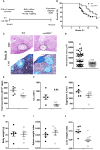
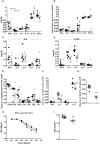
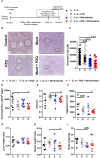
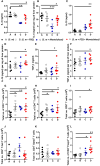
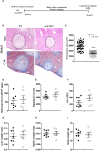
Similar articles
-
Montelukast alleviates inflammation in experimental autoimmune encephalomyelitis by altering Th17 differentiation in a mouse model.Immunology. 2021 Jun;163(2):185-200. doi: 10.1111/imm.13308. Epub 2021 Feb 28. Immunology. 2021. PMID: 33480040 Free PMC article.
-
Cysteinyl Leukotriene Receptor Antagonism by Montelukast to Treat Visual Deficits.J Ocul Pharmacol Ther. 2024 Dec;40(10):617-628. doi: 10.1089/jop.2024.0111. Epub 2024 Oct 2. J Ocul Pharmacol Ther. 2024. PMID: 39358316 Review.
-
Characterization of cysteinyl leukotriene-related receptors and their interactions in a mouse model of asthma.Prostaglandins Leukot Essent Fatty Acids. 2019 Feb;141:17-23. doi: 10.1016/j.plefa.2018.12.002. Epub 2018 Dec 12. Prostaglandins Leukot Essent Fatty Acids. 2019. PMID: 30661601
-
Cysteine Leukotriene Receptor Antagonist-Montelukast Effects on Diabetic Retinal Microvascular Endothelial Cells Curtail Autophagy.Invest Ophthalmol Vis Sci. 2024 Nov 4;65(13):15. doi: 10.1167/iovs.65.13.15. Invest Ophthalmol Vis Sci. 2024. PMID: 39504050 Free PMC article.
-
Possible Therapeutic Potential of Cysteinyl Leukotriene Receptor Antagonist Montelukast in Treatment of SARS-CoV-2-Induced COVID-19.Pharmacology. 2021;106(9-10):469-476. doi: 10.1159/000518359. Epub 2021 Aug 2. Pharmacology. 2021. PMID: 34350893 Review.
References
MeSH terms
Substances
LinkOut - more resources
Full Text Sources

